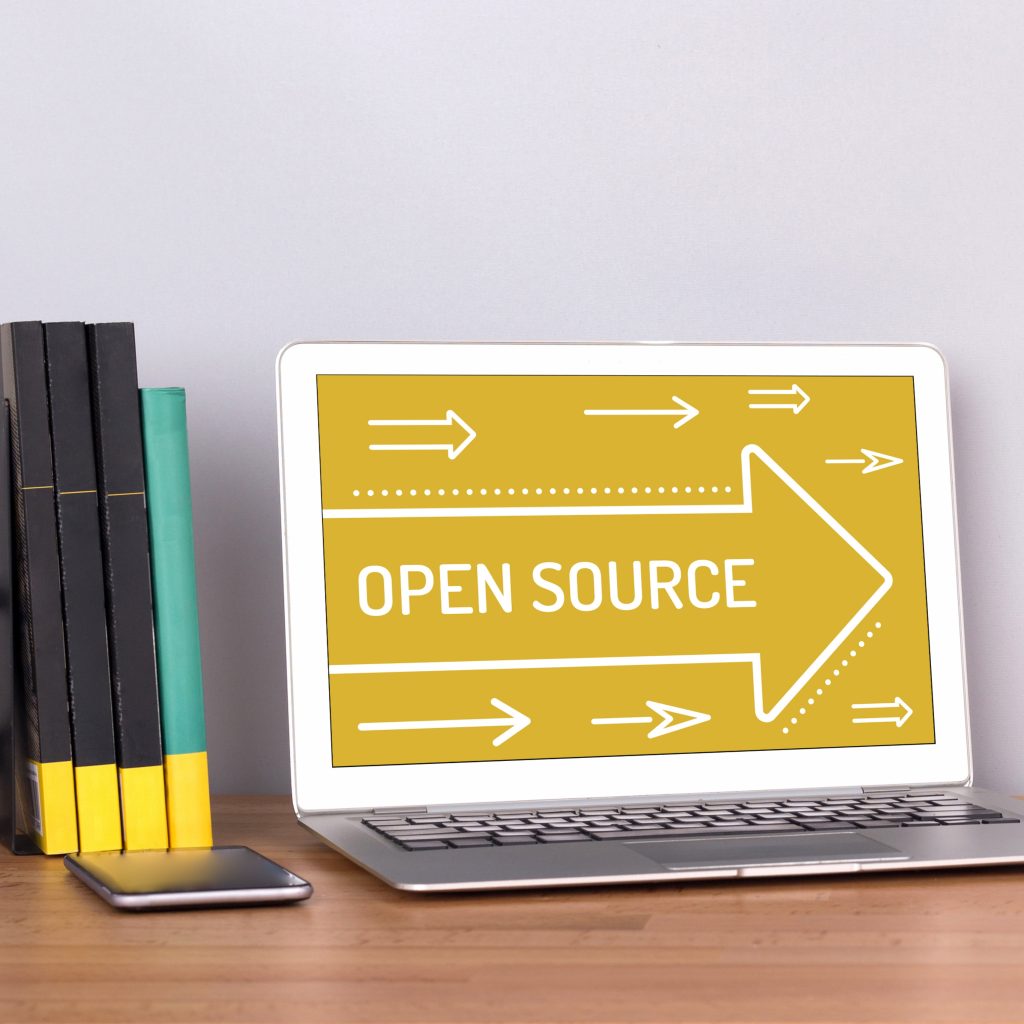Are you a designer interested in contributing to open source projects but don’t know where to start? Bridging the gap between open source and design can seem daunting, but it doesn’t have to be. With the right guidance, you can make a meaningful impact and collaborate with developers on innovative projects.
Open source projects have revolutionized the way software is created, shared, and improved upon. However, design contributions to these projects often lag behind, leaving a gap between developers and designers. This gap can be bridged by designers who are willing to step up and contribute their skills to open source projects.
If you’re a designer looking to contribute to open source projects, this guide is for you. We will explore the challenges designers face when navigating the open source world and provide practical tips on how to get involved. By bridging the gap between design and open source, you can create impactful designs and collaborate with developers to create software that benefits the community as a whole.
Benefits of Contributing to Open Source Design Projects
Contributing to open source design projects offers numerous benefits, including the opportunity to improve the user experience through diverse contributions. Diverse perspectives can lead to more innovative and inclusive designs that cater to a wider range of users. Additionally, recognizing and valuing non-technical contributions, such as user research, graphic design, and usability testing, is crucial for the success of open source design projects. This recognition encourages a more inclusive community and fosters a sense of belonging for all contributors.
Furthermore, accommodating novices in the community is essential for the growth and sustainability of open source design projects. By providing resources and support for beginners, the community can attract and retain a broader range of contributors, ultimately leading to more diverse and high-quality designs. Overall, contributing to open source design projects not only allows for personal and professional growth but also supports a more inclusive and user-focused design community.

Understanding the Development Process
The process of development is a complex and dynamic process that involves various stages and factors. It encompasses physical, emotional, cognitive, and social changes that occur over time as individuals grow and mature. In order to fully grasp the intricacies of development, it is important to consider the various theories and frameworks that have been proposed to explain this process. Furthermore, understanding the role of genetics, environment, and external influences in shaping development is essential.
Schematic Design Phase
The schematic design phase is a crucial step in the architectural graduation project, following the research phase. The transition involves taking the findings and insights from the research phase and integrating them into the design process. This requires effectively translating research outputs, such as site analysis, environmental impact assessments, and user needs, into design decisions and considerations.
During the schematic design phase, key activities include developing a conceptual framework for the project, exploring various visualization techniques to communicate design ideas, and assessing the feasibility and effectiveness of different design options. The integration of research outputs into the design process is important as it ensures that the final design solutions are grounded in evidence-based knowledge and responsive to the context and needs of the project.
The conceptual framework serves as a guiding principle for the design, helping to create a cohesive and meaningful architectural solution. Visualization techniques, such as sketches, diagrams, and 3D models, are essential for effectively communicating design ideas and for obtaining feedback from stakeholders. Assessment strategies are used to evaluate the design options against project requirements, technical constraints, and sustainability goals. Overall, the schematic design phase is a critical stage where the research phase informs and enriches the design process, leading to well-informed and innovative architectural solutions.
Architectural Graduation Design Studio
The architectural graduation design studio is a pivotal component of an architecture student’s education, serving as a transition from academic learning to professional practice. The design studio typically consists of a physical space where students work on their graduation projects under the supervision of experienced faculty members. The studio provides a collaborative environment for students to engage in the design process, with access to resources such as creative software, model-making tools, and a library of architectural references.
The graduation project typically involves multiple phases, including research, conceptualization, design development, and presentation. This allows students to apply the knowledge and skills they have acquired throughout their education to a real-world design problem. The studio plays a crucial role in nurturing students’ ability to critically analyze design challenges, develop innovative solutions, and effectively communicate their ideas.
Continual development of educational strategies within the design studio is essential to ensure that learning outcomes remain effective. This may involve integrating new technologies, refining teaching methodologies, and incorporating industry best practices. The main goals of the design studio include fostering creativity, honing critical thinking skills, and facilitating the open exchange of information to inspire the design process.
Overall, the architectural graduation design studio serves as a bridge between academia and professional practice, providing students with the necessary skills and experience to excel in their future careers.
Correlation Between Questions and Answers in Digital Library of Types
In a digital library of types, questions and answers are correlated through categorization and matching. The questions are categorized based on their topics or subjects, and the corresponding answers are also categorized to match the relevant questions. This categorization helps in efficiently linking specific questions to their corresponding answers. For example, if a user searches for a specific type of information, such as “types of renewable energy sources”, the digital library will match this question with the corresponding answer that provides information on renewable energy sources.
Linking specific questions to their corresponding answers in the digital library aids in efficient information retrieval and navigation. Users can easily find the answers to their specific questions by navigating through the categorized library, rather than having to sift through a large volume of information. Accurate and relevant keyword tagging is crucial in ensuring effective question-answer matching. The keywords help in categorizing and matching questions and answers, and ensure that the relevant information is retrieved when a user searches for specific topics in the digital library.
Therefore, the correlation between questions and answers in a digital library of types, along with accurate keyword tagging, plays a vital role in providing efficient information retrieval and navigation for the users.
Concept Development
The key steps for developing the concept of the design system core involve adopting the designer, product, and engineer mindsets to shape the foundational bedrock. The designer mindset focuses on creativity and aesthetics, ensuring the design system is visually appealing and user-friendly. The product mindset emphasizes the user experience and functionality, ensuring that the design system meets the needs of the end-users and aligns with the overall product strategy. The engineer mindset focuses on technical feasibility and scalability, ensuring that the design system can be effectively implemented and maintained.
Each mindset is important for creating an effective design system. The designer mindset ensures that the system is visually cohesive and easy to use, the product mindset ensures that it meets user needs and supports the product’s goals, and the engineer mindset ensures that it is feasible to build and maintain. For example, when addressing the core, the designer mindset may consider the color palette and typography choices, the product mindset may consider how the design system supports specific user interactions, and the engineer mindset may consider the underlying technology and code architecture.
By integrating these mindsets, the foundational bedrock of the design system can be developed to effectively support the overall product and user experience.
Smart Contracts and Social Contracts
Smart contracts are self-executing contracts with the terms of the agreement directly written into code. In contrast, social contracts are informal agreements within a community, outlining the expectations and responsibilities of its members. Both can be utilized to promote community care and self-care strategies by incentivizing healthy behaviors and fostering a supportive and accepting community.
Smart contracts can be used to incentivize healthy behaviors by rewarding individuals for meeting their health goals, such as exercising regularly or eating nutritious foods. They can also enforce social contracts by holding individuals accountable for their actions within the community, such as being respectful and supportive of others. By tailoring these contracts to address specific needs and challenges identified in the community, such as mental health support or combating social isolation, they can effectively promote overall well-being and self-care.
By integrating smart and social contracts, communities can create a system that not only promotes healthy behaviors but also fosters a supportive and accepting environment for its members. This approach can lead to improved mental and physical health outcomes and a stronger, more connected community.
Functional Form Language
Functional form language is a programming concept that focuses on using functions as the primary building blocks for structuring code. By breaking down the program’s logic into smaller, reusable functions, developers can improve code readability and maintainability.
To utilize functional form language effectively, start by identifying the various operations and processes within the program and then create separate functions for each of these tasks. This approach allows for clear and modular code that is easier to understand and maintain. Additionally, functional form language promotes the use of immutable data and pure functions, which can help prevent unexpected side effects and make the program more predictable.
For example, instead of writing a long, complex algorithm within a single block of code, a developer can break it down into smaller, focused functions. This not only makes the code easier to comprehend but also allows for easier testing and troubleshooting.
In a real-world scenario, a functional form language can be beneficial in a financial application by using separate functions to handle calculations, input validation, and data formatting. This approach improves the overall functionality of the program and makes it simpler to update or modify in the future.
Making a Contribution to an Open Source Project
Open-source projects rely on the contributions of individuals to thrive and improve. Making a contribution to an open-source project not only adds value to the project itself, but it also provides valuable experience for the contributor. Whether it’s fixing a bug, adding a new feature, or improving documentation, contributing to open source projects allows individuals to collaborate with others, build their skills, and give back to the community.

Choosing the Right Project for You
When selecting a project in the open-source community, it is essential to consider its goals and the factors that influence the choice of metrics. These metrics should align with the project’s objectives and provide a clear measurement of its success. Key metrics relevant to measuring the health and success of an open source community include code commits, active contributors, community engagement, and the number of resolved issues.
Collaborative establishment of metrics is crucial in ensuring that they accurately reflect the evolving needs of the community. Periodically reviewing and adjusting these metrics with the input of community members is vital for the continuous growth and improvement of the project. This collaboration also fosters a sense of ownership and commitment among the community, leading to a more sustainable and successful open-source project.
By carefully selecting a project, aligning metrics with its goals, and involving the community in establishing and reviewing these metrics, it becomes possible to ensure that the project is well-positioned for success within the open-source community.
Doing Research on the Project Beforehand
Before embarking on a project, it is essential to conduct thorough research on existing alternatives and competitors. In this case, it is crucial to consider the possibility of emerging technology and the potential for joining existing open-source competitors. Some current alternatives or competitors to the project may include similar open-source software, proprietary solutions, or emerging technologies that offer similar functionalities.
Analyzing the competition is important to understand their approach to the problem and their customer base. By understanding their motivations for using competing projects, as well as the features and benefits they offer, we can better position our project in the market. Joining existing open-source competitors may also be a viable option, as it can provide opportunities for collaboration, community support, and shared resources.
By conducting research on the project beforehand, we can gain valuable insights into the competitive landscape, potential partnerships, and emerging technologies. This will enable us to make informed decisions, identify opportunities for differentiation, and better meet the needs of our target audience.
Developing Your Skills for the Chosen Project
Mentorship plays a crucial role in open source communities by fostering skill development, knowledge sharing, and creating a sense of belonging. Developing a mentorship program for your project is essential for nurturing new talent, growing leadership, and preventing maintainer burnout.
Creating learning opportunities is key to mentorship. Encouraging team members to share their expertise and learn from each other fosters a culture of continuous improvement. Being a connector within the community, you can match mentees with mentors who can provide guidance and support based on their expertise.
Using chat tools for community interactions allows for real-time collaboration, fostering a sense of community and providing opportunities for mentorship to happen organically. Hosting events such as workshops, conferences, or webinars can also provide valuable mentorship opportunities.
Incorporating mentorship into your open source project not only ensures the development of valuable skills and knowledge but also helps to create a sustainable and inclusive community. Taking the time to mentor new talent and grow leadership within the project is essential for long-term success.
Identifying How You Can Help the Community
There are numerous ways to help the community, such as offering mentorship to aspiring individuals, engaging with community projects, and providing guidance and support to those in need. Through mentorship, individuals can create a positive ripple effect by passing on their knowledge and skills to the next generation. This not only benefits the mentees, but also brings personal rewards to the mentors as they witness the growth and success of those they have helped.
Common reasons for reluctance to engage with the community include lack of time, feeling unqualified, or not seeing the immediate impact of their actions. To address this, it’s important to support and encourage developers to participate by providing flexible opportunities that fit their schedule, offering training and resources to build their confidence, and showing the long-term benefits of community engagement.
Overall, by promoting mentorship, community projects, and offering guidance and support, we can create a more connected and supportive environment that benefits not only the individuals involved, but the community at large.
Communicating With Other Contributors
Open communication and collaboration with other contributors in the open source community are critical for the success and growth of a project. Engaging with users and maintaining a welcoming culture fosters a supportive environment where individuals feel valued and motivated to contribute. This collaboration allows for the sharing of ideas, feedback, and knowledge, leading to the enhancement of the project.
Contributions come in various forms, including code, documentation, testing, and community management. Each type of contribution brings unique value to the community, as it helps to improve the project, attract new contributors, and serve the needs of users.
Understanding the users and contributors that the project aims to assist and engage is essential for its success. This understanding helps in prioritizing features, providing efficient support, and creating a sense of ownership among contributors and users. Open communication and collaboration within the open source community are crucial for creating a supportive and inclusive environment that thrives on the diverse contributions of its members.

Conclusion
In conclusion, contributing to open source design projects can be a rewarding and exciting experience. It allows designers to share their work with the world, collaborate with others, and learn new skills. However, it is important to remember that contributions must be made carefully, as mistakes can have serious consequences. Contributing to an open source project should be done with respect for the community and care taken to ensure that all contributions are up to the standards of the project. With the right attitude and approach, contributing to an open source design project can be a great experience.
